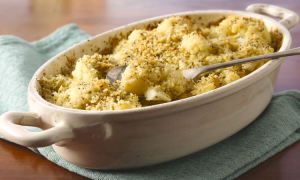Are you planning a kitchen remodel or designing your dream kitchen from scratch? One of the most critical aspects to consider is the kitchen interior layout. The layout of your kitchen can significantly impact its functionality, flow, and overall aesthetics. Let’s explore some popular kitchen layouts to help you make an informed decision.

1. Single Wall (One-Wall) Kitchen:
- Ideal for small spaces or studio apartments.
- All kitchen elements are aligned along a single wall.
- Space-saving, but limited in counter and storage space.

How to Make A One-Wall Kitchen Layout Work:
Think vertical. You only have so much width to work with, so taking your cabinets up as far as possible will help create extra storage space. While the traditional work triangle is not possible in a one-wall kitchen, try to put your fridge on one end, oven and hob in the middle and the sink at the other end. If your cabinets do not go up to ceiling, utilise the space above them by storing lesser-used items there. Alternatively, you can use this space as a display area to strengthen the theme of your kitchen.
2. Galley Kitchen:
- Efficient design with two parallel walls containing kitchen components.
- Clear work triangle (sink, stove, refrigerator) and ample counter space.
- Suitable for small to medium-sized kitchens.
How to Make A Galley Kitchen Layout Work:
With an additional row of cabinetry, the galley kitchen already offers more flexibility when it comes to storage space. Especially for bigger families or multiple-cook kitchens, it is important to have the work areas along only one of the walls, not both. This will help you to avoid traffic through the work triangle and eliminate the risk of injury.
The work triangle was devised in the 1920’s as one of the first measures of efficiency in a residential kitchen. The triangle creates a clear path between the area for food preparation (stove top), the cleaning area (kitchen sink) and the food storage area (refrigerator).
The Principles of the Kitchen Work Triangle:
• The length of each triangle leg is between 1.2 and 2.7m
• The combined length of the three legs should be between 4m and 7.9m
• There should not be any appliances or cabinetry intersecting any of the legs of the triangle
• There should not be any major traffic through the triangle
For maximum kitchen efficiency and usability, the basic guidelines* below should be applied:
• Entry doors to the kitchen should be at least 812mm wide
• An entry door should not interfere with the safe operation of any appliances, and appliance doors should not interfere with one another
• The length of work aisles should be at least 1060mm for single cook kitchens, and 1220mm for multiple cook kitchens
• Walkways should be at least 915mm wide
• In a seating area where there is no traffic behind the seat, a clear walkway of 915mm should be allowed from the table or counter edge to the edge behind it.
• Seating should be a minimum of 610mm wide for each person. Allow a 460mm leg clearance at a table that is 760mm high; 380mm clearance at a kitchen counter (914mm high); and 305mm at bar counter (1066mm high).
• If there is only one sink, it should be located next to or across from the stove top and fridge.
• A sink should be flanked by a minimum 610mm landing area, with 460mm on either side.
• A primary work surface of at least 760mm wide and 600mm deep should be next to the sink
• A dishwasher should be placed within 900mm from a sink
• There should be a landing space of at least 380mm next to the handle side of the fridge or one no more than 1200mm opposite the fridge
• The cooking surface should have minimum landing areas of 300mm on the one side and 380mm on the other side.
• There should be a minimum of 600mm between the cooking surface and the non-combustible surface above it.
• Provide a cooking ventilation system above all cooking surface appliances.
• Do not locate the cooking surface under an operable window and provide a fire extinguisher near the kitchen’s exit, away from cooking equipment.
• Microwave ovens should be placed based on the user’s requirements, with 75mm below shoulder height being ideal.
• Provide a landing area of at least 380mm above, below or next to the microwave oven.
• Provide a landing area of at least 380mm next to the oven or one no more than 1200mm opposite the oven.
• Landing space required for adjacent appliances may be combined by taking the greater requirement and adding 300mm.
• A total of 4000mm countertop space at 600mm deep, with 380mm high clearance, is required to accommodate all storage, preparation, landing and work areas.
• In addition to general lighting, each work surface should be well lit by appropriate task lighting.

3. L-Shaped Kitchen:
- Utilizes two adjacent walls, forming an “L” shape.
- Offers flexibility in design and works well in various kitchen sizes.
- Provides good counter space and keeps the kitchen open.

How to Make A L-shaped Kitchen Layout Work:
Where space allows, make the most of the corner by installing a walk-in pantry cupboard. This way you won’t lose the valuable space that is usually lost in a corner, and you gain a huge asset to your kitchen. With an L-shaped kitchen, you may even be able to create a small breakfast nook in the opposite corner, further increasing your family’s enjoyment of the room.
4. U-Shaped Kitchen:
- Cabinets and appliances arranged along three walls, creating a “U” shape.
- Maximizes storage and counter space but requires a larger area.

How to Make A U-Shaped Kitchen Layout Work:
Keep window areas open and uncluttered in a U-shaped kitchen. This type of kitchen layout provides the perfect opportunity for an uninterrupted work triangle so make the best use of the space by having the work areas on the opposite end of the back- and entry doors.
5. Island Kitchen:
- An island is added to an existing layout, increasing workspace and serving as a focal point.
- Popular in open-concept homes and larger kitchens, but needs adequate floor space.

How to Make An Island Kitchen Layout Work:
Utilise the island as both a work- and social area where family and friends can interact while meals are being prepared. Because of its location in the centre of the kitchen, it is a great place to install prominent decorative lighting that can also serve as task lighting.
6. Peninsula Kitchen:
- Similar to an island but attached to one wall.
- Offers additional counter space and a casual dining area.

How to Make A Peninsula Kitchen Layout Work:
As with the island kitchen, the peninsula offers a great opportunity for interaction during meal preparation. It is a great solution for a small enclosed kitchen, where a wall can be removed to open the area up to an adjacent room without giving up on storage space.
7. Open-Concept Kitchen:
- Integrated with the living or dining areas, creating a seamless flow.
- Encourages social interaction and is popular in modern homes.
When planning your kitchen layout, consider factors like the size and shape of your space, your cooking and dining habits, the number of people using the kitchen, and your budget. Keep in mind the “kitchen work triangle” for an efficient workflow.
Additionally, think about storage solutions, lighting, and your preferred style and aesthetics. Consult with a professional kitchen designer or architect for expert guidance in creating a layout that suits your needs and brings your dream kitchen to life.
The kitchen interior layout is a fundamental aspect of kitchen design that can significantly enhance your cooking experience and the overall look of your home. Choose wisely, and you’ll have a kitchen that’s not only beautiful but also functional.






